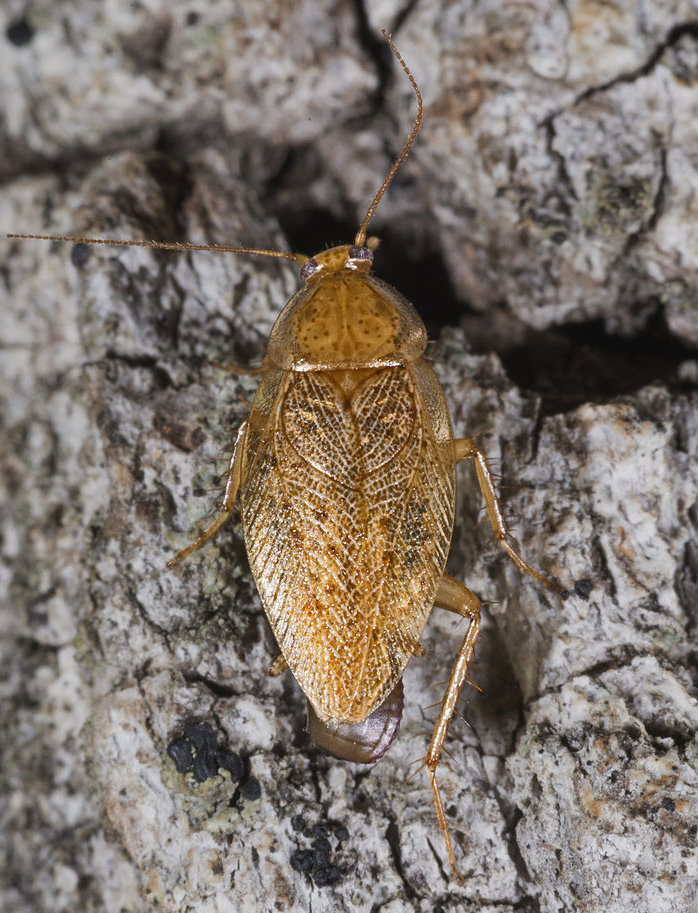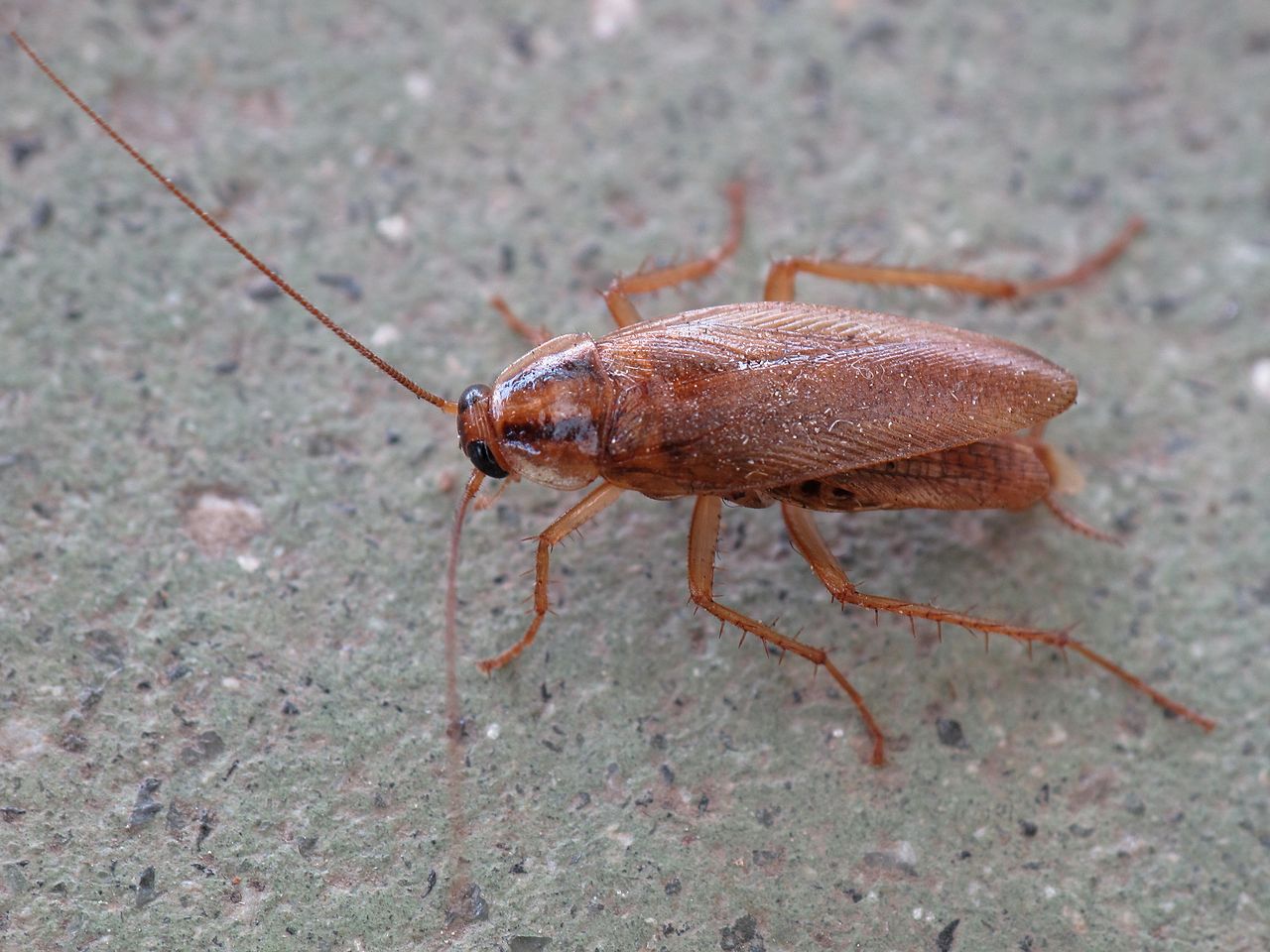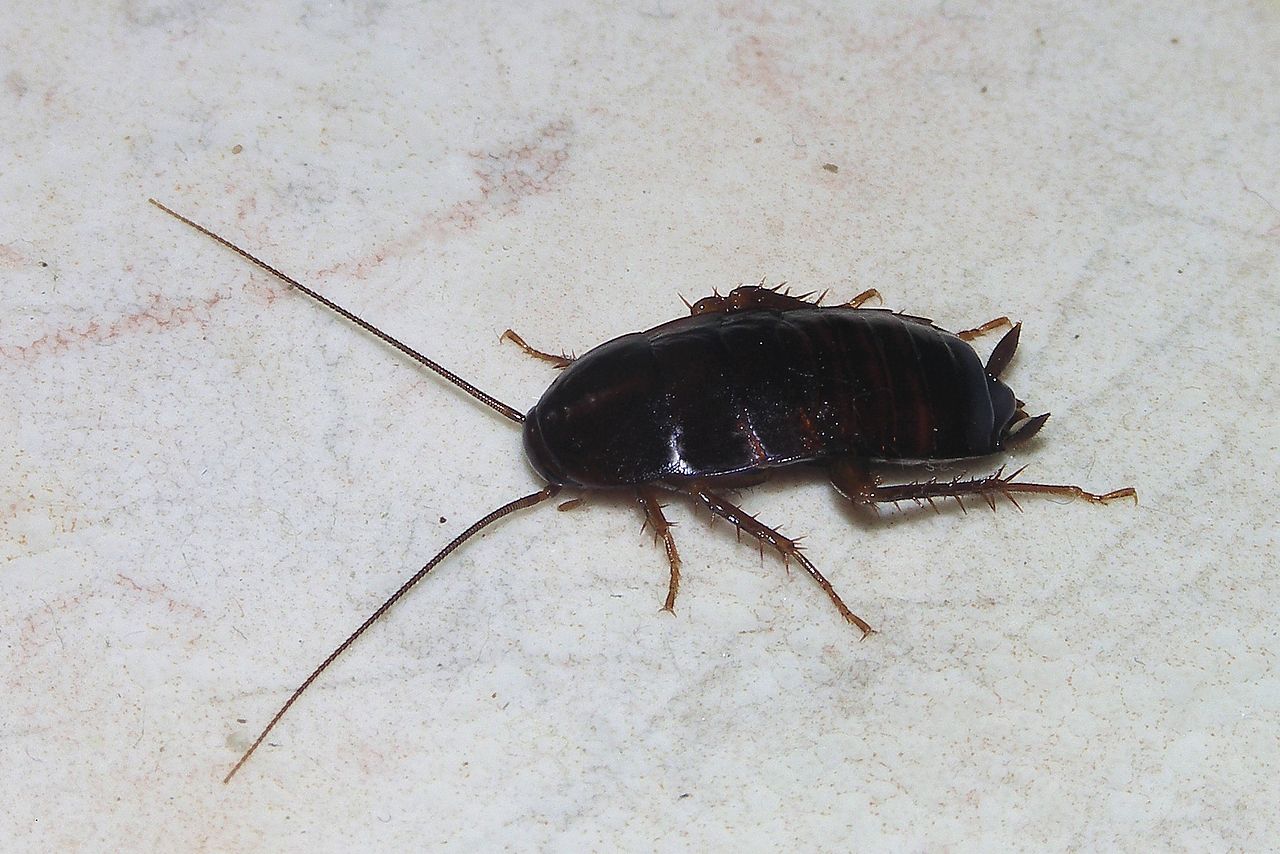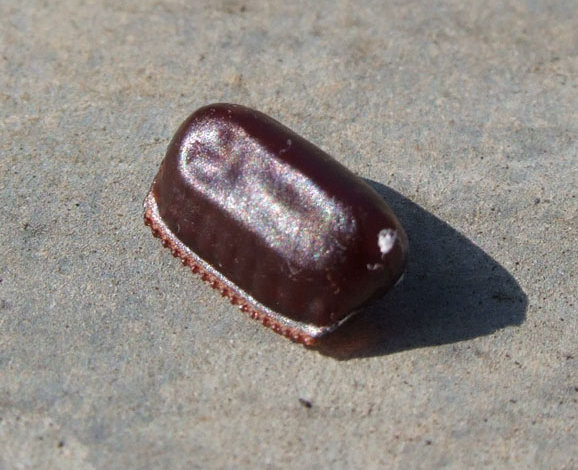Cockroaches
Cockroaches belong to the order Blattodea, which also includes the mainly tropical termites. They are lumped with the grasshoppers and crickets into a non-scientific grouping called the orthopteroids, and are quite closely related to the praying mantises.
Cockroaches have flattened elongate bodies and some species run at great speed when disturbed. Most species have long, thread-like antennae and the forewings, which are held flat over the adult insect’s body, have a leathery appearance. In some species the females have reduced wings. Non-native species can be more than 30mm long. The species native to Britain are 5-11mm long when adult and are mostly yellowish brown in colour.
Species in Britain and Ireland
There are three cockroach species considered native to Britain but they do not occur in Ireland. The tawny cockroach, Ectobius pallidus, the dusky cockroach, Ectobius lapponicus and the lesser cockroach, Ectobius panzeri. They are not pests and live out of doors. The last mentioned is mainly a coastal insect along the south and east coast of England and the south coast of Wales. The other two species are more widely distributed in the south of England, with the tawny cockroach also being found in south Wales.
Left: Tawny cockroach Ectobius pallidus female with ootheca showing at the end of her abdomen Right: dusky cockroach Ectobius lapponicus. Cockroaches have short stout cerci at the end of the abdomen.
Cockroaches have a bad reputation as several species which are probably tropical in origin have become established around the world and are associated with human habitation. These include the common German cockroach Blatella germanica (not native to Europe, probably from NE Africa) and the oriental cockroach Blatta orientalis. Less commonly, the American cockroach Periplaneta americana and the Brown Banded cockroach Supella longipalpa. They are largely confined to heated but not dry buildings. The Australian cockroach, Periplaneta australasiae, often infests heated glasshouses in botanical gardens but is unlikely to be found in garden greenhouses.
Left: German cockroach Blatella germanica Right: Oriental cockroach Blatta orientalis
Biology
Cockroaches are omnivorous. They feed on a wide range of live and dead plant material as well as scavenging on dead and dying animals. The native species are active during the day during warm sunny weather, when they are sometimes seen climbing up plant stems. Adults of the lesser and tawny cockroaches can fly but females of the dusky cockroach have vestigial wings and can only crawl.
The non-native species are largely nocturnal and hide in dark places during the day. They can occur in outhouses and can occasionally be found in gardens among dead vegetation.
Life cycle
Most cockroaches deposit their eggs in purse-shaped egg pods known as oothecae. In the native species, the oothecae are placed in the soil. The eggs hatch into nymphs that are smaller but similar in appearance to the adult insect, with the wings gradually developing as the nymphs mature. The tawny and dusky cockroaches have life cycles that take two years to complete, whereas the lesser cockroach completes its development in one year. The latter species overwinters as eggs that hatch in spring, with the nymphs becoming adult in late summer. The other two species overwinter in the fourth nymphal stage, spending the winter months hidden in grass tussocks. They reach the adult stage in early to mid-summer. Adults remain active until early autumn.
Non-native species in heated buildings and glasshouses can breed continuously.

.jpg)


Left: Ootheca of an American cockroach Periplaneta americana Right: nymph of Tawny cockroach Ectobius pallidus
Role of cockroaches in gardens
The native species of cockroach are usually only found on rough grass and scrub and are not frequently found in gardens. When they do occur they cause no noticeable damage to garden plants. There seem to be few published records of these cockroaches in gardens, perhaps they are assumed to be small house species and disregarded. It would be good to look out for them and send in records to the appropriate Recording Scheme.
Non-native cockroaches in heated glasshouses are considered to be pests as they eat the soft young foliage and flowers of a wide range of plants.
Other sources of information
Website
Website of the grasshoppers and allied insects recording scheme of Britain and Ireland
Identification guide to native cockroaches (and earwigs and stick insects)
Book
Marshall, J. A. & Haes, E. C. M. (1988) Grasshoppers and allied insects of Great Britain and Ireland. Harley Books
Page text drafted by Andrew Halstead, reviewed by Andrew Salisbury, compiled by Steve Head
![Tawny cockroach Ectobius pallidus nymph Photo: This image is created by user B. Schoenmakers at waarneming.nl, a source of nature observations in the Netherlands. [CC BY 3.0 (https://creativecommons.org/licenses/by/3.0)]](images/Ectobius_pallidus_nymph.jpg)
Left: Tawny cockroach Ectobius pallidus female with ootheca showing at the end of her abdomen Right: dusky cockroach Ectobius lapponicus. Cockroaches have short stout cerci at the end of the abdomen.
Cockroaches have a bad reputation as several species which are probably tropical in origin have become established around the world and are associated with human habitation. These include the common German cockroach Blatella germanica (not native to Europe, probably from NE Africa) and the oriental cockroach Blatta orientalis. Less commonly, the American cockroach Periplaneta americana and the Brown Banded cockroach Supella longipalpa. They are largely confined to heated but not dry buildings. The Australian cockroach, Periplaneta australasiae, often infests heated glasshouses in botanical gardens but is unlikely to be found in garden greenhouses.
.jpg)

Cockroaches
Cockroaches belong to the order Blattodea, which also includes the mainly tropical termites. They are lumped with the grasshoppers and crickets into a non-scientific grouping called the orthopteroids, and are quite closely related to the praying mantises.
Cockroaches have flattened elongate bodies and some species run at great speed when disturbed. Most species have long, thread-like antennae and the forewings, which are held flat over the adult insect’s body, have a leathery appearance. In some species the females have reduced wings. Non-native species can be more than 30mm long. The species native to Britain are 5-11mm long when adult and are mostly yellowish brown in colour.
Species in Britain and Ireland
There are three cockroach species considered native to Britain but they do not occur in Ireland. The tawny cockroach, Ectobius pallidus, the dusky cockroach, Ectobius lapponicus and the lesser cockroach, Ectobius panzeri. They are not pests and live out of doors. The last mentioned is mainly a coastal insect along the south and east coast of England and the south coast of Wales. The other two species are more widely distributed in the south of England, with the tawny cockroach also being found in south Wales.


Left: German cockroach Blatella germanica Right: Oriental cockroach Blatta orientalis
Biology
Cockroaches are omnivorous. They feed on a wide range of live and dead plant material as well as scavenging on dead and dying animals. The native species are active during the day during warm sunny weather, when they are sometimes seen climbing up plant stems. Adults of the lesser and tawny cockroaches can fly but females of the dusky cockroach have vestigial wings and can only crawl.
The non-native species are largely nocturnal and hide in dark places during the day. They can occur in outhouses and can occasionally be found in gardens among dead vegetation.
Life cycle
Most cockroaches deposit their eggs in purse-shaped egg pods known as oothecae. In the native species, the oothecae are placed in the soil. The eggs hatch into nymphs that are smaller but similar in appearance to the adult insect, with the wings gradually developing as the nymphs mature. The tawny and dusky cockroaches have life cycles that take two years to complete, whereas the lesser cockroach completes its development in one year. The latter species overwinters as eggs that hatch in spring, with the nymphs becoming adult in late summer. The other two species overwinter in the fourth nymphal stage, spending the winter months hidden in grass tussocks. They reach the adult stage in early to mid-summer. Adults remain active until early autumn.
Non-native species in heated buildings and glasshouses can breed continuously.
![Tawny cockroach Ectobius pallidus nymph Photo: This image is created by user B. Schoenmakers at waarneming.nl, a source of nature observations in the Netherlands. [CC BY 3.0 (https://creativecommons.org/licenses/by/3.0)]](images/Ectobius_pallidus_nymph.jpg)
Left: Ootheca of an American cockroach Periplaneta americana Right: nymph of Tawny cockroach Ectobius pallidus
Role of cockroaches in gardens
The native species of cockroach are usually only found on rough grass and scrub and are not frequently found in gardens. When they do occur they cause no noticeable damage to garden plants. There seem to be few published records of these cockroaches in gardens, perhaps they are assumed to be small house species and disregarded. It would be good to look out for them and send in records to the appropriate Recording Scheme.
Non-native cockroaches in heated glasshouses are considered to be pests as they eat the soft young foliage and flowers of a wide range of plants.
Other sources of information
Website
Website of the grasshoppers and allied insects recording scheme of Britain and Ireland
Identification guide to native cockroaches (and earwigs and stick insects)
Book
Marshall, J. A. & Haes, E. C. M. (1988) Grasshoppers and allied insects of Great Britain and Ireland. Harley Books
Page text drafted by Andrew Halstead, reviewed by Andrew Salisbury, compiled by Steve Head


- Home
- Garden Wildlife
- Insects
- Cockroaches












